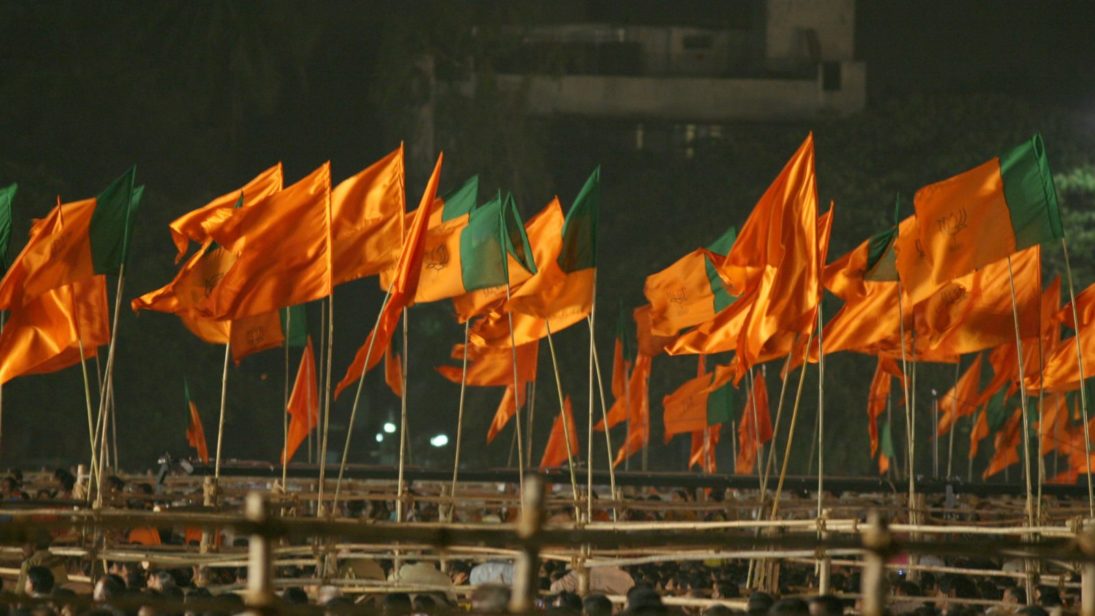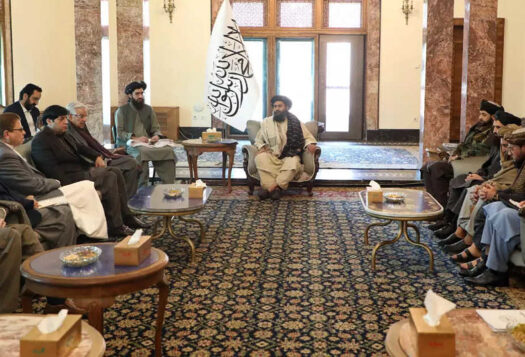
Kashmir’s political scene has been active since the alliance between People’s Democratic Party (PDP) and Bharatiya Janata Party (BJP) broke down and Governor’s Rule was instituted across the state. Municipal elections were held and panchayat (village council) elections are ongoing, while the state looks ahead towards Lok Sabha elections next year.
Most crucially, the governor of Jammu and Kashmir, Satya Pal Malik, appointed by New Delhi a few months ago, dissolved the assembly of the state on November 21st, 2018, the same day that the PDP submitted a letter to the governor stating that it had reached an agreement with the National Conference (NC) and Congress to form a coalition government. In a legal sense, Governor Malik should have accepted the PDP’s claim and sought a floor test in the State Assembly. Yet Malik decided instead to dissolve the entity in order to “provide stability and security to the state,” claiming that he had not received the letter from the PDP-led alliance.
These politics of opportunism do nothing to confront the real problems of political alienation and increasing support for the militancy that pervade the Kashmir Valley.
Governor’s Rule and Elections
Since the start of Governor’s rule in June, municipal elections in the state were held in October. Both the PDP and the National Conference (NC) boycotted these elections citing Article 35A, which accords a slew of rights and privileges to the “permanent residents” of the state. This led to single-digit voter turnout in the Kashmir Valley. Across four phases of election results, the Valley saw a measly 8.2 percent turnout in the first phase, 3.4 percent in the second phase, 3.5 percent in the third phase, and 4.2 percent in the last phase. However, overall voter turnout in the state concluded at around 35 percent.
However, the low voter turnout and boycott by major political parties were blessings in disguise for the BJP. Not only did it sweep in its stronghold in Jammu, as expected, but it also won in the militancy-infested districts of the South Kashmir, having secured control of at least four of the 20 local legislative bodies in the districts of Anantnag, Pulwama, Kulgam, and Shopian. The BJP also made inroads in the north Kashmir and central Kashmir.
The low voter turnout and boycott by major political parties were blessings in disguise for the BJP. Not only did it sweep in its stronghold in Jammu, as expected, but it also won in the militancy-infested districts of the South Kashmir.
The ongoing panchayat elections have seen a similar trend in voter participation. These elections are also held in phases, with the most recent seeing high turnout in the Jammu area. However, in the Kashmir division, the southern districts saw many candidates running unopposed as well as dismal voter participation. Even many districts in central and north Kashmir witnessed a low voter turnout.

Alliance of Dissimilar Parties
After the BJP-PDP alliance failed, Governor Malik legally should have dissolved the assemblies. This gesture would have signaled his neutrality. However, he preferred to keep the assemblies intact, allowing Kashmir’s political parties explore the possibility of forming a new government. It appears that the real reason behind this move was to give Sajad Lone, the president of the People’s Conference Party and so-called “separatist-turned-mainstream-politician”, time and support to gather a coalition and form a government as Chief Minister of Jammu and Kashmir. Since Lone declared Prime Minister Modi his “big brother” and himself a friend of BJP, the ruling party has all but set in stone that it would enter into alliance with Lone’s party to form a coalition government. After the dissolution of the state government, Lone persuaded many PDP legislators to defect so that he could have sufficient numbers to form a government.
The whole process of Lone attempting to make members of other parties defect has kept the PDP and NC constantly on their toes. Thus, when the NC sensed that it was losing ground to Sajad Lone, it joined forces with the PDP and Congress to make an alliance and offer support to the PDP in government formation. This occurred despite the NC and PDP’s historical ideological differences, with the PDP having emerged in the late nineties to challenge the NC’s monopoly over the Kashmir Valley. The PDP became a strong competitor, echoing the concerns of the larger public on issues like human rights violations, dialogue with Pakistan and militants, and the resolution of the Kashmir conflict through self-rule.
There are a few possible reasons for this alliance of dissimilar parties. First, it is conceivable that the PDP and NC were not interested in contesting elections in the current volatile security situation in Kashmir. Under the current conditions, in which violence has increased and the space for mainstream voices is shrinking, their leaders could not safely return to their constituencies to campaign.
The second reason behind the NC-PDP alliance was likely to prevent Lone from strengthening his electoral base in the Valley. Though the NC and the PDP were fearful of his agenda over the past six months, his mission only began to seem feasible when Muzaffar Baigh, the founding member of the PDP, gave a press briefing in which he announced that he will join Lone in government formation. For the PDP and NC, this indicated that their political parties were under grievous threat. The only option available was to come together with Congress.
Additionally, domestic Kashmiri politics are taking a cue from national political dynamics, in which Congress is trying to form a grand alliance to stop the BJP from coming to power again in 2019. By expressing its willingness to join a PDP-led alliance, Congress has shown that it will join hands even with parties with whom they have had friction in the past.
What’s in Store for 2019 Kashmir Elections
With their claim to form a government overlooked by Governor Malik, the NC, PDP, and Congress will likely refrain from forming any formal alliance against the BJP prior to the 2019 Lok Sabha and State Assembly elections. However, since there is much at stake for these parties in the region, a post-poll alliance cannot be ruled out. What is certain is that no single party is going to secure the majority of the votes in the upcoming elections: Kashmir has entered an enduring state of coalition politics.
What is certain is that no single party is going to secure the majority of the votes in the upcoming elections: Kashmir has entered an enduring state of coalition politics.
In a smart strategy, the BJP would continue to win seats in J&K by appealing to the Hindu majority in Jammu, where sentiment against another Valley-centric chief minister is high, and ensuring that the PDP and NC’s vote bank in the Kashmir Valley is divided. Yet a campaign of polarization the religious populations in the state will undoubtedly exacerbate the already gaping ideological divide between Valley and Jammu throughout the next election cycle.
Since the breakdown of its alliance with the BJP, the PDP’s leadership in Jammu and Kashmir has been constantly under threat, and will continue to remain that way. The nature of politics in the southern districts of the Kashmir Valley is becoming increasingly radical and violent. Compared to years prior, there are now no-go areas for mainstream politicians in the region. That could be gauged from the fact that the PDP-BJP government was not able to hold the longest delayed by-poll for the vacant seat in the Anantnag constituency after Mehbooba Mufti became Chief Minister.
Political Alienation Continues
Low voter turnout in recent elections suggests that a combination of pervasive alienation and the security situation in the Kashmir has made citizens disinterested in addressing their day-to-day problems through political participation. Unless there is an improvement in the security situation and genuine political outreach from New Delhi, this political skepticism will continue to affect the next election cycle.
Many in Kashmir see the November dissolution of the assembly through the historical prism of political disempowerment by New Delhi. There is now a prevalent belief that the Center wants to get rid of NC and PDP, since both have lost their relevance. Their so-called “soft separatism” no longer gels well with the power corridors of New Delhi, where slogans of “self-rule” and “autonomy” for Kashmiris of the PDP and NC respectively are no longer acceptable. In contrast, Sajad Lone is being propped up because he emphasizes development over than autonomy and self-rule as a solution to Kashmir’s problems.
Although the formation of a PDP-NC-Congress alliance could not have transformed the ground situation all together, a semblance of a political consensus might have helped the pervasive sentiment of disenfranchisement within the Valley. However, real change, be it political or economic, will only come if the Center reaches out to Pakistan and resumes talks. Further political bickering will only aggravate the already fragile security and political situation.
***
Image 1: Al Jazeera English via Flickr
Image 2: NurPhoto via Getty Images


